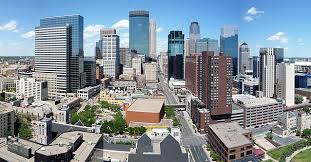The Twin Cities refer to the metropolitan area consisting of Minneapolis and St. Paul, the two largest cities in the state of Minnesota. Located in the upper Midwest region of the United States, these cities form the core of a vibrant, interconnected urban area that serves as a cultural, economic, and social hub. Despite their close proximity, Minneapolis and St. Paul each maintain distinct identities, offering residents and visitors a unique blend of urban charm, history, and natural beauty.
Location of the Twin Cities
Upper Midwest of the United States
The Twin Cities are located in southeastern Minnesota, near the confluence of the Mississippi and Minnesota Rivers. Minneapolis and St. Paul lie approximately 10 miles apart, with both cities connected by major highways and a network of bridges spanning the Mississippi River. The entire metropolitan area is part of the Upper Midwest, a region known for its cold winters, scenic landscapes, and strong ties to industry and agriculture.
- Minneapolis: The larger of the two cities, Minneapolis is located west of St. Paul and is known for its modern skyline, rich arts scene, and extensive park systems. It is the largest city in Minnesota.
- St. Paul: Minnesota’s capital city, St. Paul, lies to the east of Minneapolis and boasts a historic downtown, with well-preserved architecture and a strong sense of tradition.
Both cities serve as economic powerhouses within the region, hosting a range of industries, universities, and cultural institutions.
Geographic Features
The geography of the Twin Cities is heavily influenced by its river systems and surrounding lakes. Minneapolis is often called the “City of Lakes” due to its numerous bodies of water, including Lake Harriet, Lake Calhoun, and Lake of the Isles, which are popular spots for outdoor recreation. St. Paul, while also bordered by the Mississippi River, is known for its hilly terrain and historic neighborhoods.
The Distinction Between Minneapolis and St. Paul
Minneapolis: Modern and Bustling
Minneapolis is often seen as the more modern and bustling of the two cities. Its skyline is dominated by contemporary high-rises, and it is home to a thriving arts scene, including the Walker Art Center, the Minneapolis Institute of Art, and numerous theaters. The city’s cultural diversity is reflected in its neighborhoods, dining options, and local festivals.
Minneapolis also has a reputation for outdoor activities, with a network of parks, trails, and green spaces that encourage biking, walking, and running. The Chain of Lakes is one of the city’s most popular areas, offering a scenic retreat within the urban landscape.
St. Paul: Historical and Traditional
By contrast, St. Paul is known for its historical charm and more laid-back atmosphere. As Minnesota’s state capital, it houses important government buildings such as the Minnesota State Capitol and the Cathedral of Saint Paul. The city’s architecture reflects its history, with Victorian-era homes, preserved downtown buildings, and cultural landmarks.
St. Paul hosts annual events like the Minnesota State Fair and has a strong literary tradition, being the birthplace of famed author F. Scott Fitzgerald. While quieter than its neighbor, St. Paul offers a rich cultural experience with museums, theaters, and historic sites.
Importance of the Twin Cities Area
Economic and Cultural Hub
The Twin Cities are a major economic engine for the Midwest, home to several Fortune 500 companies, including Target, 3M, and General Mills. The area is also a leader in healthcare, finance, and education, with the University of Minnesota playing a central role in research and innovation.
Culturally, the Twin Cities are a hub for the arts, music, and theater. Minneapolis has a particularly strong live music scene, with venues like First Avenue playing a key role in shaping the careers of artists like Prince. St. Paul, on the other hand, celebrates its rich history and heritage through festivals, parades, and public art installations.
Sports and Recreation
Both Minneapolis and St. Paul are home to major sports teams, making the Twin Cities a haven for sports enthusiasts. Minneapolis is home to the Minnesota Vikings (NFL) and the Minnesota Timberwolves (NBA), while St. Paul hosts the Minnesota Wild (NHL). The Minnesota Twins (MLB) play in Target Field, located in downtown Minneapolis, offering baseball fans a modern ballpark experience.
Outdoor recreation is a big part of life in the Twin Cities, with residents embracing the parks, lakes, and trails that crisscross both cities. In the winter, snow sports such as ice skating, skiing, and hockey become popular activities.
